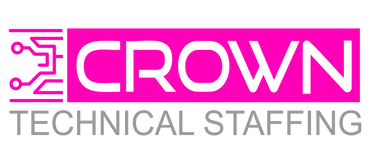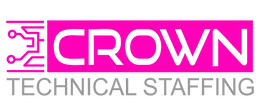It’s the time of year when our clients, brimming with ideas and aspirations, draw us into the heart of strategy meetings to sculpt the vision for 2024. Recently, a revealing conversation unfolded with the VP of HR from a mid-sized Industrial Equipment Manufacturer. They proudly shared that their team of Field Service Engineers was eligible to pocket an additional $4-5k annually through aftermarket sales bonuses. Yet, beneath the surface, a startling truth emerged: less than 30% of these in-field engineers had access to essential tools and resources needed to fully harness and hit their annual sales targets.
I wasn’t shocked, however, the VP was.
This revelation allowed us to craft a plan of action, one aimed at adding a revenue stream for the company and bolstering support for its Product and Engineering teams.
Our goal?
To elevate their success rate to 90% of the team hitting their bonuses in 2024.
In this edition of “Engineering 365,” we’re going to explore the pros and cons of enhancing your aftermarket sales strategy and what that can mean for your organization. We’ll unravel how certain strategies can not only boost revenue but also fortify customer retention and satisfaction.
A Strategic Blueprint for 2024
The aftermarket services business is becoming imperative for manufacturers, especially during a time of economic downturn. Aftermarket services are a broad category that consists of the sale and delivery of maintenance, spare parts, and other value-added services. In past economic downturns, this category has been a consistent revenue source and profit stabilizer. Experience shows that manufacturers who focus on services have outperformed their peers and exited past crises stronger than before. What might have begun as a side business selling spare parts has, for some manufacturers, turned into a major source of value creation.

What’s In It For You?
Building a robust aftermarket offering has at least 3 major benefits:
- Enhanced End-User Experience:Providing maintenance service and replacement parts extends product life and improves performance. OEMs’ in-depth knowledge of their industrial machines ensures superior service quality.
- Strengthened Customer Relationships:Regular interactions through aftermarket sales and service can help manufacturers understand customers’ ongoing needs. It increases opportunities to influence customer choices and preferences over the product’s lifetime.
- Increased Shareholder Value:Aftermarket services significantly boost operational cash flows with higher profit margins. Margins for aftermarket services can be double or even ten times higher than new unit sales. Some revenue models integrate aftermarket services into sales contracts, ensuring stable and predictable cash flows.
Despite these clear benefits, however, there are also pitfalls to keep in mind. Before offering aftermarket services, companies should step back to ask a fundamental question:
How does this align with the company’s overall strategy?
Here are some common challenges manufacturers face in delivering aftermarket services effectively:
1. High Implementation Costs:
Implementing advanced technologies like IoT, AI, and AR/VR for aftermarket services can be costly. The initial investment in technology, infrastructure, and training can be significant, and there’s a risk that the return on investment may not materialize as quickly as expected.
Strategy:
- Adopt a cost-benefit analysis to prioritize technologies with the highest ROI potential.
- Explore partnerships and collaborations with tech providers for cost-sharing opportunities.
- Implement incremental technology adoption, starting with low-cost solutions and scaling up based on success.
- Seek government grants or subsidies available for technological upgrades.
2. Complexity in Integration and Compatibility:
Integrating new digital solutions with existing systems can be complex. There’s a risk of compatibility issues, which can lead to disruptions in service delivery. Ensuring seamless integration often requires additional resources and expertise.
Strategy:
- Conduct thorough compatibility assessments before adopting new technologies.
- Utilize modular and scalable solutions that can easily integrate with existing systems.
- Engage specialized IT consultants for seamless integration.
- Implement pilot projects to test integration before full-scale deployment.
3. Dependency on Technology and Vendors:
Relying heavily on advanced technologies and external vendors for aftermarket services can create dependencies. Any downtime or issues with the technology or vendor services can directly impact the manufacturer’s ability to deliver aftermarket services.
Strategy:
- Diversify vendor partnerships to avoid reliance on a single provider.
- Develop in-house expertise in key technological areas.
- Establish service level agreements (SLAs) with vendors for guaranteed uptime and support.
- Implement redundancy systems to mitigate the impact of technology failures.
4. Over-customization of Services:
While customized service agreements can enhance customer satisfaction, over-customization can lead to operational inefficiencies and increased costs. Finding the right balance between customization and standardization is crucial.
Strategy:
- Develop a core set of standardized service offerings with options for limited customization.
- Use customer feedback and data analytics to identify the most demanded service features.
- Implement modular service designs allowing for flexible customization without significant operational changes.
5. Training and Skill Development Challenges:
The shift towards more technologically advanced services requires employees to have new skills. Continuous training and development can be resource-intensive, and there’s also the challenge of skill gaps in the existing workforce.
Strategy:
- Establish ongoing training programs in collaboration with technology providers.
- Foster a culture of continuous learning and skill development.
- Explore e-learning platforms for scalable and cost-effective training solutions.
- Partner with educational institutions for specialized training programs.
6. Managing Customer Expectations:
As manufacturers offer more advanced and proactive services, customer expectations can rise correspondingly. Failing to meet these heightened expectations can lead to customer dissatisfaction.
Strategy:
- Set clear and realistic service expectations through transparent communication.
- Implement customer feedback mechanisms to continuously gauge and meet expectations.
- Offer exceptional customer service to manage and exceed expectations.
- Regularly review and update service offerings based on customer needs and market trends.
7. Risk of Cannibalizing New Product Sales:
Effective aftermarket services, especially those that significantly extend product life, can potentially cannibalize new product sales. Customers might opt to service and maintain existing products rather than purchase new ones.
Strategy:
- Align aftermarket services with new product development strategies.
- Focus on service offerings that complement rather than replace new product sales.
- Develop upgrade and trade-in programs to encourage customers to buy new products.
- Use aftermarket interactions as opportunities to promote new products.
8. Complexity in Service Delivery:
As services become more technologically advanced and personalized, the complexity of service delivery increases. This can strain resources and lead to inefficiencies if not managed properly.
Strategy:
- Implement advanced project management tools to handle complex service delivery.
- Develop clear protocols and checklists to streamline service processes.
- Utilize customer relationship management (CRM) systems for efficient service tracking and delivery.
- Regularly review and optimize service delivery processes for efficiency.
Every manufacturer begins its aftermarket services transformation journey from a different starting point and, therefore, each will have a unique path. To be successful in expanding into and delivering aftermarket services effectively, there must be a multi-pronged approach. The conversation with my client not only shed light on the untapped potential within their team but also highlighted a universal truth in the manufacturing sector. The aftermarket services business, often seen as a secondary stream, holds incredible potential for revenue generation, customer retention, and satisfaction.
As an Engineering and Manufacturing recruitment firm, Crown Technical Staffing® can help you to understand the potential for growth in your current team, helping you to keep hold of the best staff and learn more about finding new talent as your needs grow. Arrange a discovery call with our team and learn more about how we can help your business to thrive.
Check out our new assessment tool. The “Department Workflow Accelerator” has been designed to provide Operations and Engineering leadership valuable feedback on increasing your speed to market, and highlight current bottlenecks and strategic areas of growth within your teams.
Score yourself for free via the link below.


